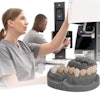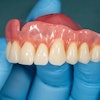
Editor's note: Allan Farman's column, Talking Pictures, appears regularly on the DrBicuspid.com advice and opinion page, Second Opinion.
The Luddite movement, which began in 1811, took its name from the fictive Ned Ludd. The original Luddites were British textile artisans who protested against the changes produced by the Industrial Revolution -- changes they felt were leaving them without work.
Since then, the term Luddite has been used derisively to describe anyone opposed to technological process and technological change. I believe those individuals who wish to retain outmoded imaging standards are present-day Luddites. Such individuals have a tendency to criticize those using better technology as being oriented to personal financial gain, when the reality is that they are following a higher standard of care.
Last year, I was fortunate enough to speak on cone-beam CT (CBCT) at international congresses and symposia in the U.S., Europe, and Asia. It was interesting that the folks most inclined to question the value of CBCT were mainly those individuals with limited access to this technology, largely from regions of Europe.
Strangely, these same individuals -- while questioning the use of CBCT for dental implantology for "easy cases" and those placed in tooth sockets -- often were the same individuals whose groups wished to evaluate CBCT in such areas as dental caries detection and to study periodontal disease -- activities for which CBCT is not particularly suited due to scatter effects from dental restorations.
As an oral and maxillofacial radiologist who has been performing CBCT clinically for five years, I can state categorically that I do not believe in the mythical "easy implant case." Using CBCT to review implants placed prior to the availability of CBCT in patients requiring further implants reveals that where the implants appeared satisfactory in 2D imaging, such as panoramic radiographs, this is often not the case when viewed on CBCT in 3D.
I am convinced that all dental implant surgery should be preceded by a careful 3D appraisal and that CBCT is the best approach. I am also convinced that evaluation of the mandibular third molar should be by 3D imaging wherever the mandibular canal is superimposed on the roots of the impacted third molar when viewed on panoramic imaging. To do otherwise does not provide the patient with current state-of-the-art imaging and, in my professional judgment, this is tantamount to not providing a satisfactory standard of care.
Of course, there are always concerns whenever ionizing radiation is utilized. The first is obviously dose. CBCT procedures should be collimated to the task at hand to minimize dose and often small field-of-view systems are sufficient. Such systems provide doses that are comparable to those produced in a standard panoramic procedure (e.g., Carestream Health's Kodak 9000 has been measured to have an effective dose of 17 microSievert, and Imaging Sciences International's i-CAT is equivalent to approximately two panoramic images for standard exposure regimens). The information contained in a 3D dataset is far greater for tasks such as dental implant surgery planning or extraction of impacted mandibular third molars than is ever the case for traditional 2D images such as the panoramic or periapical projection.
Another concern is the ability of the practitioner to be able to maximize the diagnostic utility of the projection. If this is a concern, it can be remedied by sending the image volume to a reading service such as Dimensions Imaging or 360imaging, among others.
The comments and observations expressed herein do not necessarily reflect the opinions of DrBicuspid.com, nor should they be construed as an endorsement or admonishment of any particular idea, vendor, or organization.
Copyright © 2009 DrBicuspid.com

















